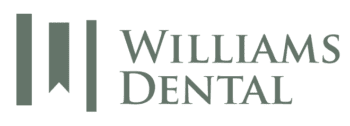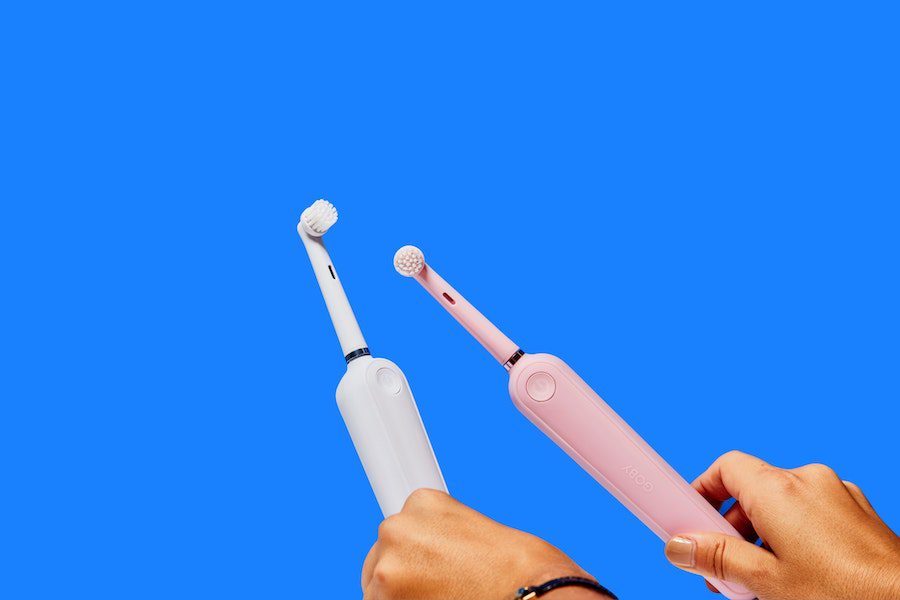Your guide to choosing between a manual or electric toothbrush
Choosing a new toothbrush can feel overwhelming, even though it’s just a toothbrush. Between body style, bristle strength, and features (everything from charcoal bristles to tongue cleaners), the options can feel endless.
And that’s before you remember that the average person spends 1,000 hours brushing their teeth over a lifetime. So maybe it’s not just a toothbrush.
If you’re having trouble choosing a new toothbrush, I’m here to help. Let’s start by putting the bells and whistles aside and focus on the real question.
What type of toothbrush should you buy?
Types of toothbrushes
We’re going to focus on the two main types of toothbrushes you’ll find when you’re on the hunt: manual and electric.
A manual toothbrush is your run of the mill brush with both the basic features (such as a tongue cleaner) and enhanced features (charcoal bristles or ergonomic handles).
Meanwhile, an electric toothbrush has more state-of-the-art features, such as vibrating bristles, oscillating head, and multiple cleaning modes.
Regardless of the style you choose, you’ll notice that each have their pros and cons. Let’s talk about how to choose a toothbrush.
Benefits of a manual toothbrush
There are a couple of pros that come with manual toothbrushes which can’t be ignored.
They’re affordable
Because a manual toothbrush is the most basic option, it’s also the least expensive option. Manual toothbrushes can cost as little as one dollar (yes, $1) depending on where you’re shopping.
In most buying situations, manual toothbrushes can be bought for under $5, even for a pack of more than one.
They’re accessible
I’d bet the dollar you’ll spend on a manual toothbrush that you could find one in a vast majority of stores you visit regularly. That’s what’s great about them: you can find a manual toothbrush almost anywhere.
In addition, you don’t need a battery or charger to use them, and they’ll take up less room than an electric toothbrush.
Simply put, anyone can find and use a manual toothbrush easily.
Cons of a manual toothbrush
Despite their affordability and accessibility, there are just as many noteworthy cons of manual toothbrushes.
It’s easy to brush too hard
Many electric toothbrushes feature a pressure sensor, which will alert users that they’re brushing too hard. Needless to say, manual toothbrushes don’t have that capability.
It may not seem like a big deal to brush your teeth too hard, but it can be – even with extra soft bristles. Not only can it damage the enamel, it can also cause recessed gums, which lead to bacteria and plaque buildup.
Side note: If you’re using a manual toothbrush, there are a few ways to see if you’re brushing too hard. If your bristles are frayed, you have tooth sensitivity, or you notice your gums receding, it’s time to ease up.
There’s no timer
Manual toothbrushes don’t have the same timing capabilities that electric toothbrushes do. Because of this, it’s all too easy to brush for less than the recommended two minutes, therefore missing much of the plaque you’ve accumulated throughout the day.
You need to work harder
With manual toothbrushes, it takes more effort to replicate the movements of proper brushing (circular back and forth) than it does with an electric toothbrush.
It’s also harder to clean between the teeth with a manual toothbrush. When you can’t reach those difficult spots, you’re susceptible to bacteria growth and plaque buildup, which can easily lead to cavities and other problems.
Benefits of an electric toothbrush
There are a myriad of benefits to choosing an electric toothbrush.
They’re more effective at removing plaque
There’s one main draw of an electric toothbrush: plaque reduction.
Studies have shown that electric toothbrushes can remove up to 100% more plaque than a manual toothbrush. They’re also more effective in preventing and reducing gingivitis.
That’s because they have rotating oscillating bristles. These bristles, while the same strength as manual bristles are arranged in a circle on a head that moves back and forth. Essentially, these bristles help you clean your teeth the right way – but much, much quicker.
Oscillating bristles’ speed can range anywhere from 250 to 7,500 rotations per minute. A manual toothbrush typically reaches 300 per minute.
There’s a pressure sensor
With a built-in pressure sensor, you’ll never brush too hard. If you do, your toothbrush will quickly let you know (typically by changing its vibration patterns) and allow you to readjust. This will help to avoid gum recession and enamel damage.
You’ll always brush each section for the right amount of time
A vast majority of electric toothbrushes come with a built-in, two-minute timer. Oftentimes, they’re split into 30-second increments, which will help you know when it’s time to move on to the next section of your mouth.
More people can use electric toothbrushes
Electric brushes are a great option for those with disabilities thanks to the speed at which they work. They’re also fun for children, which in turn means that children are more likely to brush their teeth.
Cons of an electric toothbrush
There’s only one con of an electric toothbrush, and it’s one that we can’t look past.
Affordability
Unlike its manual counterpart, the price associated with electric toothbrushes can be enough to make anyone do a double-take.
While disposable electric toothbrushes, which only need batteries, can cost less than $10, other models can run upwards of $250.
Oftentimes, these smart brushes come with bells and whistles that most of us don’t need: apps that track your brushing, multiple brush modes, and charging stations that look like glass cups.
Plus, you’ll need to factor in the cost of replacement toothbrush heads. These typically come in multiples but can run as much as $50. Some companies feature a subscription service that replaces brush heads on a monthly basis for as little as $5.
Should you choose a manual or electric toothbrush?
The battle between manual vs. electric toothbrush can be confusing. But at the end of the day, I’m a dentist who’s just happy that you’re brushing at all.
Truly, my main concern is that you’re on a journey to good oral health, whether you choose manual or electric.
Here are some easy ways to make sure you’re doing just that:
- Brush for two minutes, twice per day. Your toothbrush should be at a 45-degree angle, toward the gum line.
- Brush in a circular motion, but don’t forget to use a light, back-and-forth motion on chewing surfaces.
- Floss at least once per day. Don’t just go between the teeth – form a C shape with the floss to make sure you get the space between your teeth and gums.
I offer each new patient a complimentary electric toothbrush at their first appointment. If you’d like to experience the difference, reach out to schedule your appointment today.
For more tips and tricks for great dental health, check out our Smile Guide.






